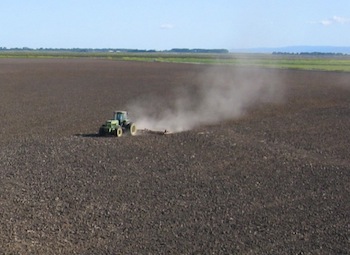A new report disputes some alleged impacts to the Central Valley from water restrictions, reveals others

Blame the housing recession, not water restrictions. That’s the conclusion of a new report from the Oakland-based Pacific Institute, which scrutinizes the connection between cutbacks in farm water deliveries and Central Valley job losses during California’s recent three-year drought.
Impacts of the 2007-2009 California Drought: What Really Happened? is described by its authors as a “nine-month assessment of new data from California’s agricultural, energy, and environmental sectors.”
Its main finding, that “Farm job losses were largely unrelated to water constraints,” appears to be a direct refutation of claims by Congressman Devin Nunes (R-Fresno), and others, that regulatory and court-ordered restrictions on water deliveries have caused “massive unemployment” in the San Joaquin Valley.
On the contrary, the Pacific Institute study concludes that during the drought:
“California’s agricultural community proved flexible and resilient, generating agricultural revenues in 2007, 2008, and 2009 that were the highest on record. And agriculture-related occupations remained a stable portion of total jobs available in areas directly impacted by water supply restrictions.”
The authors say collapse of the home construction industry has been a far bigger culprit in Valley unemployment, citing figures from the Great Valley Center noting “a 2% gain in agriculture-related jobs between 2003 and 2009, but a 44% reduction in construction-related jobs over that same time.”

The 107-page report goes on to say that riparian ecosystems and the commercial and recreational salmon fisheries have suffered more drought-related damage than the farm economy. But the authors say they’re not trivializing economic suffering in rural California. The lead author of the report, Juliet Christian-Smith, stressed that while the report is a statewide picture, even areas that saw the most severe cutbacks, such as the west side of Fresno County, farm-related jobs “maintained their portion of total jobs” during the drought. “It’s very important to discover the real drivers of why this area has sustained long-term suffering and unemployment for decades, said Christian-Smith, “and think about how we’re going to make these systems more resilient in future droughts.”
One of the more obscure — but fascinating — findings was the drought’s impact on our electric bills. Christian-Smith says that as stream flow declined through the state’s hydroelectric plants, electric utilities were forced to substitute power from natural gas-fired plants, creating more carbon dioxide emissions and costing customers more than a billion dollars.
